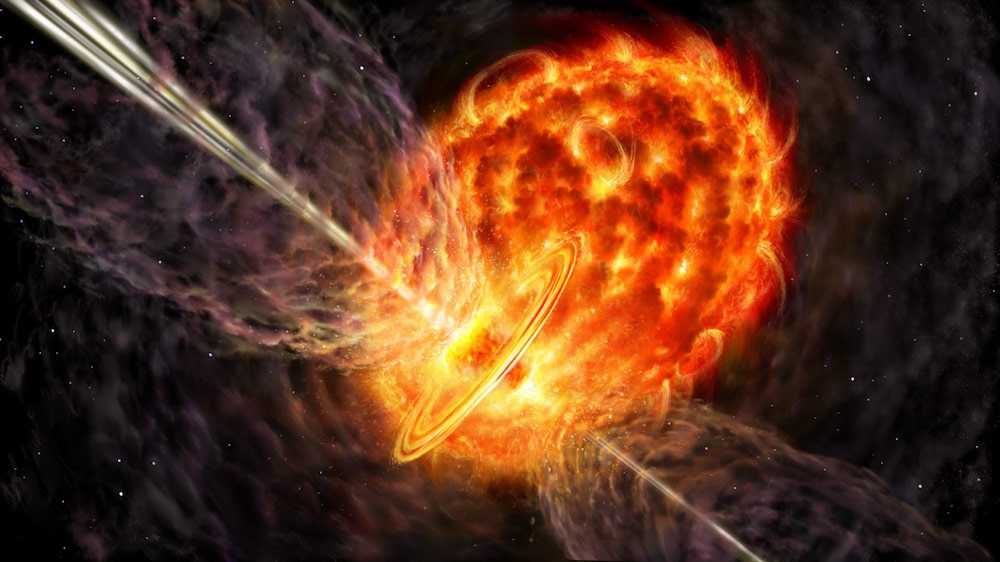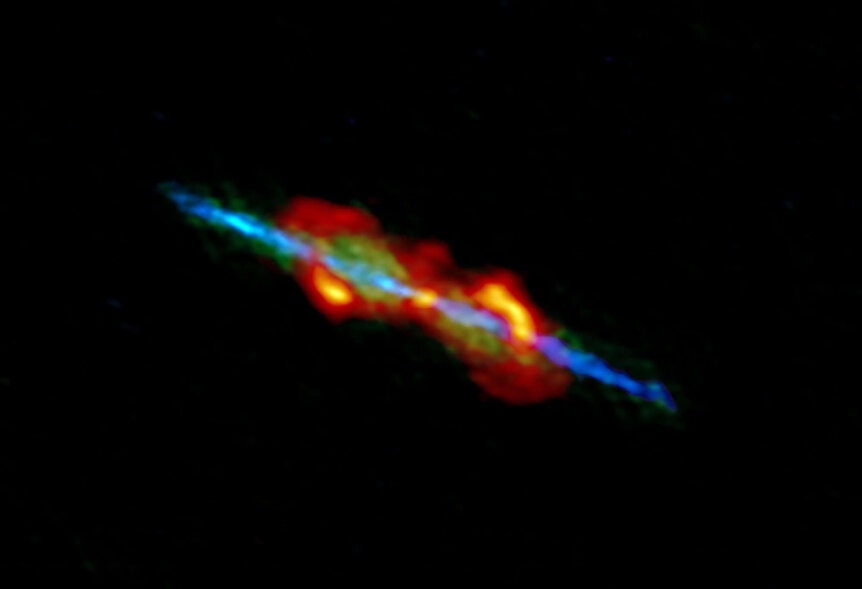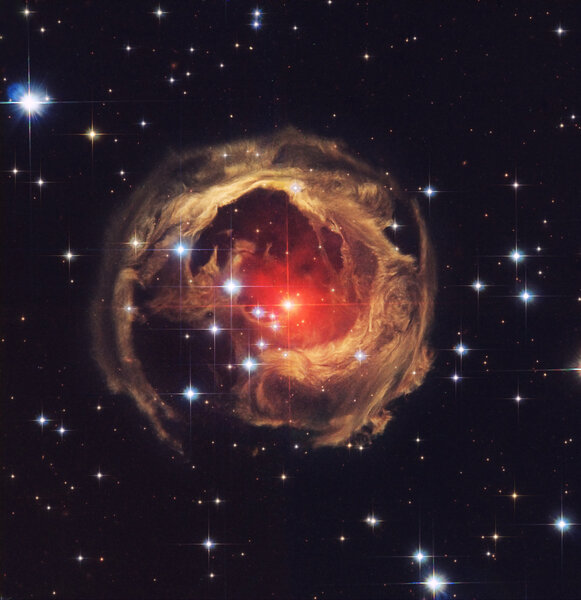Create a free profile to get unlimited access to exclusive videos, sweepstakes, and more!
After a fiery embrace, some stars undergo metamorphosis
Water fountain stars recently — or still are — eating their binary companions.

In astronomy, broadly speaking, there are two kinds of Mysterious Objects: Ones we see and don’t understand, and ones we predict from our theories but we’re not sure what they look like in a telescope.
It’s a pretty good day when you can point at one class of Mysterious Observed Objects and say they’re also one of the Mysterious Theoretically Predicted Objects.
So let’s talk about Water Fountain stars and Common Envelope Binary stars.
Years ago, infrared surveys of the sky showed a peculiar kind of star that was practically invisible in optical light — the kind we see with our eyes — despite blazing away in infrared. Microwave telescope observations of these stars showed something surprising: They were very bright at a very specific wavelength emitted by water molecules. In fact, the physics of how they emit this light works in much the same way as a laser works, though since they were observed in microwave wavelengths we call them water masers.
Together these implied that there was a star inside a thick dust cloud, and the star was blowing away gas that interacted with the dust, creating the maser. Since there were water molecules in the expanding gas these stars got nicknamed water fountains.
It’s not clear how they form. High resolution observations showed some of the material moving outward at high speed — over 100 kilometers per second — probably in the form of narrow, focused beams of material astronomers call jets. However, the bulk of the material was slower, more like 20 km/sec, and formed a torus, a donut, around the star perpendicular to the jets. That sort of structure is seen around lots of dying stars, which is hopeful; it means some of the physics here is already understood.
The common wisdom is that you need fairly massive stars, usually 8 or more times the Sun’s mass, near the ends of their lives to produce the conditions needed to make water fountains. But that had never been confirmed observationally. To find out, a team of astronomers turned to the wonderful Atacama Large Millimeter/submillimeter Array, or ALMA, in Chile to observe 15 water fountains, which range from about 7,000 to 14,000 light-years from Earth [link to paper]. ALMA is sensitive to light emitted by carbon monoxide (CO) molecules, which are very abundant around dying stars, and can be used to trace the structure close in to the stars as well as understand some of their characteristics.
What they found was very surprising. Like all elements, carbon and oxygen are defined by the number of protons in their nuclei, 6 and 8 respectively. But the number of neutrons can vary — the different atoms like this from a single element are called isotopes. If you have different isotopes of carbon and oxygen in a CO molecule they’ll emit light at slightly different wavelengths, and that can be measured by ALMA.
What the astronomers found is that the ratio of isotopes they saw didn’t make sense if the stars in water fountains are high mass. They’d have to look like carbon stars — huge red giants with a much higher proportion of carbon than oxygen in them — but the water fountain stars observed had way too much oxygen to be carbon stars. Plus these stars would have to lose vast amounts of mass to account for the observations, way more than a single star could possibly eject.
But if the stars were low mass then they’d need to be ridiculously luminous to account for the water fountain emission. Paradox! Unless… they’re not single stars.
A large fraction of all stars in the sky are in binary systems, two stars orbiting each other. In some cases the two orbit very close together, so tightly that they interact. Eventually, one of the stars will start to die and become a red giant. Due to the way gravity works in a binary system it can only expand so far before the material starts to flow onto the other star, an event called mass transfer. This can cause the two stars to get even closer together, so much so their outer layers merge, creating what’s called a common envelope. They’re sharing their atmospheres!
While this situation is inevitable in close binaries, not much is known about it theoretically because the conditions are very complex. It’s known that this stage doesn’t last long — a couple of centuries or even just a few decades — because as the two stars interact they can either eject their envelope in a huge mass loss event or they can even literally merge together, becoming a single star.
Both types of events have been seen; the gloriously weird and beautiful V838 Monocerotis is thought to be the result of two merging stars, for example. These types of things can create a lot of dust — long molecules of carbon chains — that enshroud both stars.
Also, during this extremely brief common envelope stage, material from the dying star can fall toward the companion star and form a swirling disk around it. This, together with magnetic fields, can focus twin beams of matter that move outward at high speeds and slam into the dust cloud around them.
If that sounds familiar, yeah, that’s how the water fountains form. Not only that, but given theoretical models of how common envelope binaries form and how long they last, models can be used to predict how many we expect to exist in the galaxy at any one time. The answer? A dozen or so. The same number of water fountain stars we see.
And that’s why this new work is so cool! They show that the water fountain stars are actually low mass, which was not what was first thought, and also that the ones we see are very likely the few common envelope binary stars we predict to exist. That’s a pretty decent breakthrough.
And it shows they have a convincing case that some Mysterious Observed Objects are one and the same as Mysterious Theoretically Predicted Objects. That’s a pretty good day indeed.





























